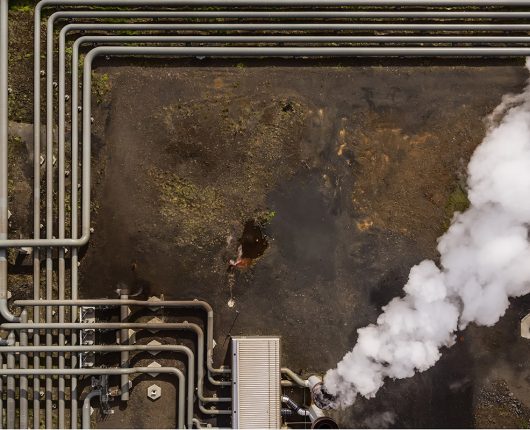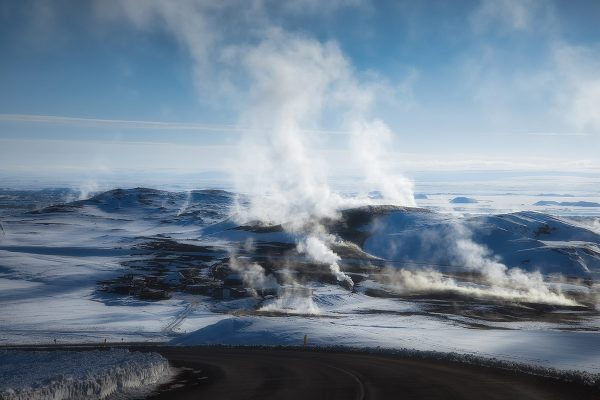Iceland is a global leader in renewable energy, thanks to its location on the Mid-Atlantic Ridge, which provides unparalleled access to geothermal resources. Currently, 90% of Icelandic homes are heated with geothermal energy, and the country has significantly reduced its dependence on fossil fuels. Additionally, its innovations in harnessing this energy have served as a model for other nations.
What is Geothermal Energy and Why Does Iceland Have So Much Potential?
Geothermal energy is the natural energy stored within the Earth, originating from the heat of the Earth’s crust, which increases with depth. This heat often manifests through volcanic eruptions, granting countries like Iceland—with high volcanic activity—a great potential to harness this energy source. Geothermal energy is highly versatile and can be used directly for heating as well as for electricity generation.
Krafla Magma Testbed: Exploring Magma as an Energy Source
One of Iceland’s most ambitious projects is the Krafla Magma Testbed (KMT), which aims to drill directly into an active magma chamber. This initiative seeks to study magma properties and its potential for energy generation. Unlike conventional geothermal systems, which rely on heat stored in rocks at certain depths, this project aims to use the extreme heat of magma to increase the efficiency of geothermal power plants.
If successful, KMT could pave the way for a new generation of geothermal plants with much greater energy capacity than current ones. Furthermore, it would enable more efficient extraction of the Earth’s heat, reducing costs and increasing the feasibility of this energy on a global scale.

Mammoth: Carbon Capture with Geothermal Energy
Another example of geothermal energy utilization in Iceland is the Mammoth plant, developed by Climeworks. This facility is the world’s largest in direct air capture and storage (DAC+S), operating with geothermal energy from ON Power’s Hellisheidi plant. With a CO₂ capture capacity of 36,000 tons per year, Mammoth represents a key step toward large-scale carbon removal.
Mammoth’s CO₂ capture process involves filtering air and storing the captured carbon in basalt rock formations underground. This process allows the CO₂ to mineralize and remain stable and secure over the long term. The facility is part of Climeworks’ effort to achieve megaton-scale carbon removal by 2030 and scale up to gigatons by 2050.
Impact and Future Prospects of Geothermal Energy
Iceland’s advancements in geothermal energy and carbon capture have global implications. As the world searches for sustainable solutions to the climate crisis, projects like KMT and Mammoth demonstrate that the combination of technology and natural resources can offer viable and efficient alternatives.
The knowledge generated from these initiatives could be applied in other countries with geothermal potential, diversifying clean energy sources and contributing to climate change mitigation. Additionally, these projects highlight the importance of investment in research and development to maximize the use of renewable energies and reduce carbon emissions worldwide.
Continue Your Professional Development
With Iceland’s advancements in geothermal energy, the enormous potential of renewable energies is clear. If you’re interested in being part of this revolution and contributing to the sustainable energy sector, our Master’s in Environmental Management and Audits will provide you with the knowledge needed to lead innovative projects. Take the opportunity to be part of a key sector for the planet’s future. Study with us and be part of the change towards a more sustainable world!
Sources
Iceland’s Mammoth direct air capture facility powered by geothermal energy is now operational.
A tunnel inside a volcano: Iceland’s ambitious plan to achieve unlimited geothermal energy.

